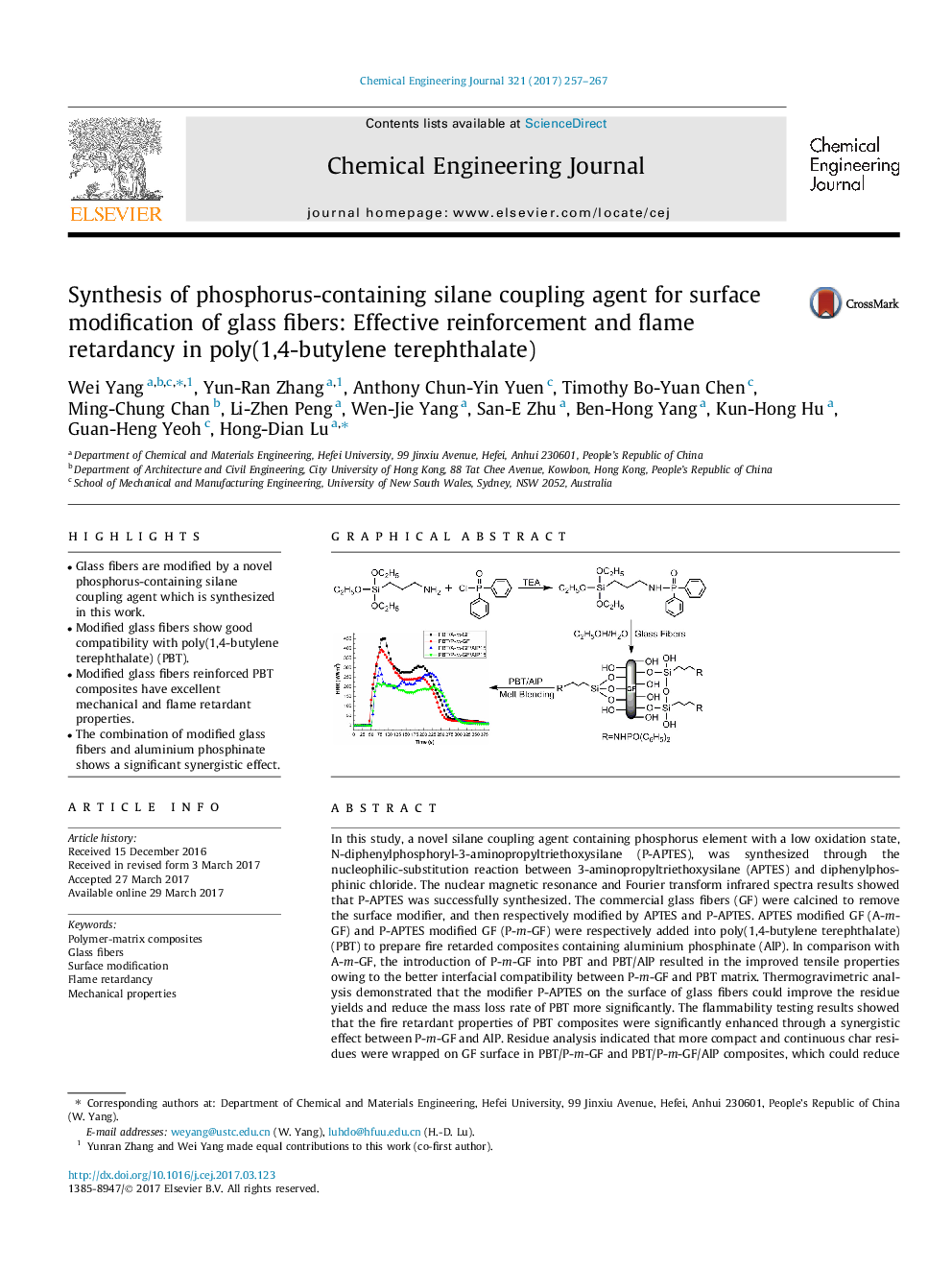| Article ID | Journal | Published Year | Pages | File Type |
|---|---|---|---|---|
| 6465874 | Chemical Engineering Journal | 2017 | 11 Pages |
â¢Glass fibers are modified by a novel phosphorus-containing silane coupling agent which is synthesized in this work.â¢Modified glass fibers show good compatibility with poly(1,4-butylene terephthalate) (PBT).â¢Modified glass fibers reinforced PBT composites have excellent mechanical and flame retardant properties.â¢The combination of modified glass fibers and aluminium phosphinate shows a significant synergistic effect.
In this study, a novel silane coupling agent containing phosphorus element with a low oxidation state, N-diphenylphosphoryl-3-aminopropyltriethoxysilane (P-APTES), was synthesized through the nucleophilic-substitution reaction between 3-aminopropyltriethoxysilane (APTES) and diphenylphosphinic chloride. The nuclear magnetic resonance and Fourier transform infrared spectra results showed that P-APTES was successfully synthesized. The commercial glass fibers (GF) were calcined to remove the surface modifier, and then respectively modified by APTES and P-APTES. APTES modified GF (A-m-GF) and P-APTES modified GF (P-m-GF) were respectively added into poly(1,4-butylene terephthalate) (PBT) to prepare fire retarded composites containing aluminium phosphinate (AlP). In comparison with A-m-GF, the introduction of P-m-GF into PBT and PBT/AlP resulted in the improved tensile properties owing to the better interfacial compatibility between P-m-GF and PBT matrix. Thermogravimetric analysis demonstrated that the modifier P-APTES on the surface of glass fibers could improve the residue yields and reduce the mass loss rate of PBT more significantly. The flammability testing results showed that the fire retardant properties of PBT composites were significantly enhanced through a synergistic effect between P-m-GF and AlP. Residue analysis indicated that more compact and continuous char residues were wrapped on GF surface in PBT/P-m-GF and PBT/P-m-GF/AlP composites, which could reduce the interface energy to the suppress the interfacial flame. Overall, the PBT/P-m-GF/AlP composites were found to be a viable option as a reinforced flame retarded polymer material with encouraging mechanical properties and outstanding fire safety performances.
Graphical abstractDownload high-res image (174KB)Download full-size image
